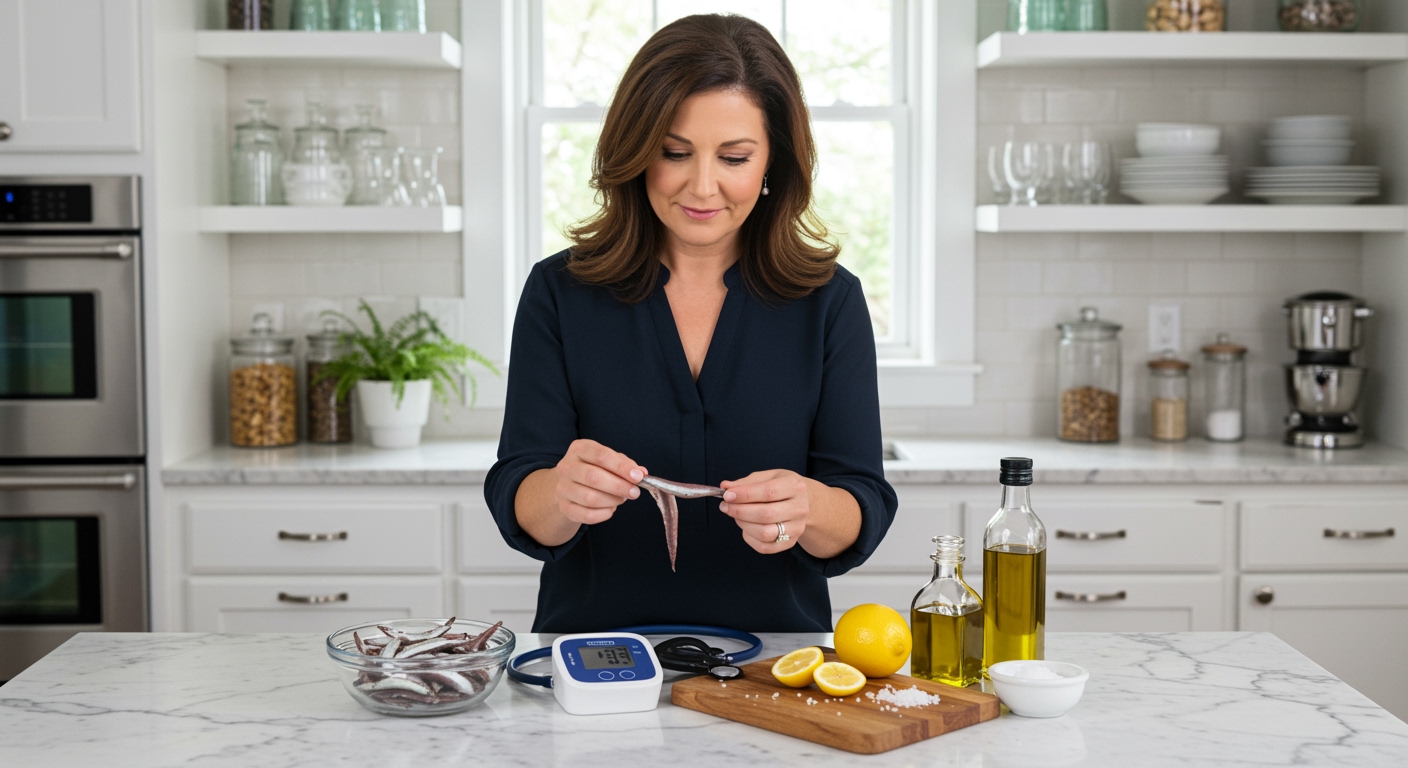✪ Key Takeaway: Arugula can lower blood pressure but rarely to dangerous levels in healthy people eating normal portions.
Introduction
Your doctor tells you to eat more leafy greens for better health.
You might wonder if these powerful vegetables can actually work too well and drop your blood pressure to unsafe levels.
Hi, I’m Abdur, your nutrition coach and today I’m going to explain whether arugula can dangerously lower your blood pressure and what you need to know to stay safe.
How Does Arugula Actually Affect Blood Pressure?
Arugula contains nitrates that your body converts into nitric oxide.
This nitric oxide helps your blood vessels relax and widen, which naturally reduces the pressure inside them.
The process happens gradually over several hours after you eat the arugula.
Your body also gets potassium from arugula, which helps balance sodium levels and supports healthy blood pressure.
The antioxidants in arugula protect your blood vessels from damage and inflammation.
These combined effects create a gentle, natural reduction in blood pressure that usually stays within safe ranges.
✪ Fact: One cup of arugula contains about 74 milligrams of nitrates, which is considered a moderate amount.
What Makes Blood Pressure Drop Dangerously Low?
Hypotension occurs when your systolic pressure drops below 90 mmHg or diastolic pressure falls under 60 mmHg.
Dangerous symptoms include dizziness, fainting, nausea, and rapid heartbeat.
Your brain and organs need adequate blood flow to function properly.
When pressure drops too low, these vital organs don’t get enough oxygen and nutrients.
Most healthy people have natural mechanisms that prevent blood pressure from dropping to dangerous levels.
Your body can quickly adjust by increasing heart rate or constricting blood vessels when needed.
However, people taking blood pressure medications or those with certain health conditions face higher risks.
✪ Note: Severe hypotension can lead to shock, which requires immediate medical attention.
Who Should Be Cautious With Arugula?
People taking blood pressure medications need to monitor their levels more carefully.
The combination of medication and nitrate-rich foods can create an additive effect.
Those with naturally low blood pressure should pay attention to how they feel after eating large amounts of arugula.
Elderly individuals often have more sensitive cardiovascular systems that respond strongly to dietary changes.
People with kidney problems may have difficulty processing the potassium in arugula effectively.
Anyone taking nitrate medications for heart conditions should discuss arugula consumption with their doctor.
Pregnant women with pregnancy-induced hypertension need careful monitoring when adding new foods to their diet.
✪ Pro Tip: Keep a food and symptom diary to track how different amounts of arugula affect your energy levels.
How Much Arugula Is Safe To Eat?
Most healthy adults can safely eat 2-3 cups of arugula daily without blood pressure concerns.
This amount provides beneficial nutrients while keeping nitrate intake within reasonable limits.
Start with smaller portions if you’re new to eating arugula regularly and gradually increase the amount.
Pay attention to your body’s response, especially during the first few hours after eating.
Spreading your arugula intake throughout the day helps prevent any sudden changes in blood pressure.
Combining arugula with other foods slows the absorption of nitrates and creates a more gradual effect.
People on blood pressure medications should start with just half a cup and monitor their response carefully.
✪ Fact: Research shows that consuming 200-300 grams of nitrate-rich vegetables daily is both safe and beneficial for most people.
What Should You Do If You Feel Dizzy After Eating Arugula?
Stop eating arugula immediately and sit down in a comfortable position.
Drink a glass of water slowly to help maintain your blood volume.
Avoid standing up quickly, as this can worsen dizziness and increase your risk of falling.
Take your blood pressure if you have a monitor available to see if it has dropped significantly.
Contact your doctor if symptoms persist for more than 30 minutes or if you feel faint.
Keep track of how much arugula you ate and when symptoms started for future reference.
Consider eating a small snack with some sodium to help stabilize your blood pressure naturally.
✪ Pro Tip: Elevating your legs while sitting can help improve blood flow back to your heart and brain.
The Bottom Line
Arugula can lower blood pressure, but dangerous drops are extremely rare in healthy people eating normal portions.
Smart eating means understanding your body’s unique responses and adjusting accordingly.
I’d love to hear about your experiences with arugula and blood pressure in the comments below – your insights help our entire community make better food choices.
References
At NutritionCrown, we use quality and credible sources to ensure our content is accurate and trustworthy. Below are the sources referenced in creating this article:
- Medical News Today: Arugula: Health benefits, nutrition, and risks
- PubMed Central: Dietary Nitrates and Cardiovascular Health
- BetterMe: Arugula Side Effects: What You Need To Know
- Health Shots: Arugula Benefits and Side Effects





